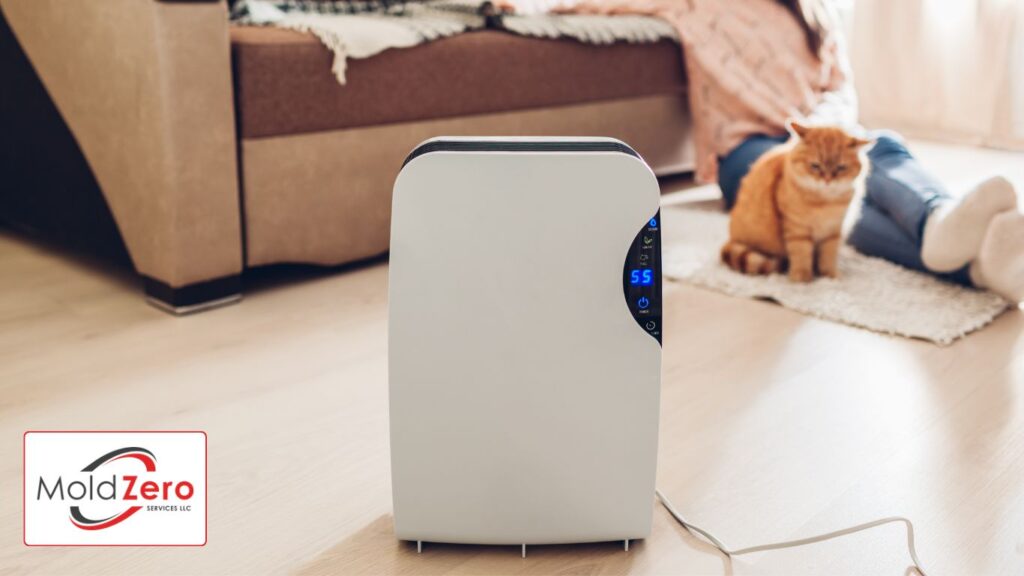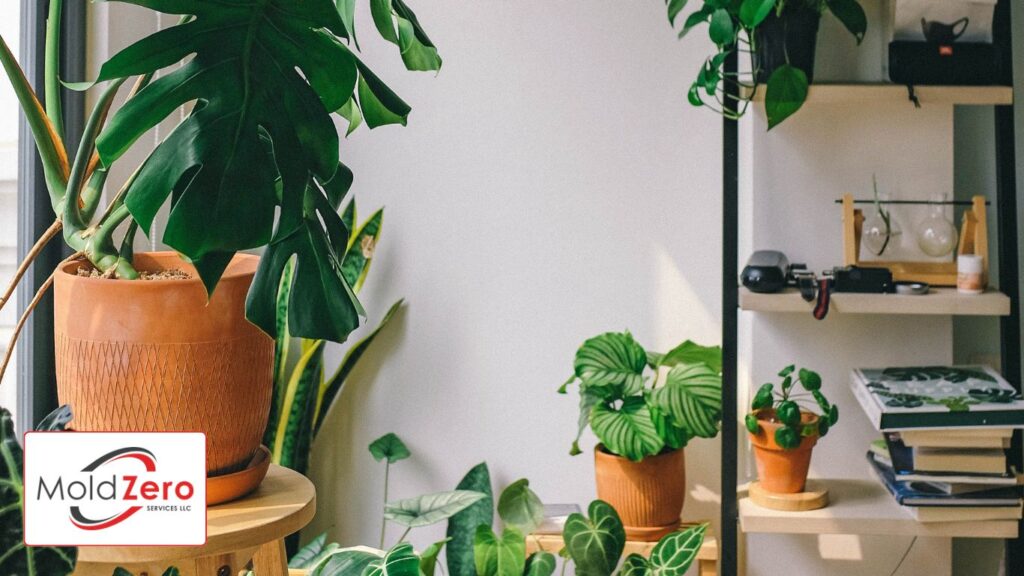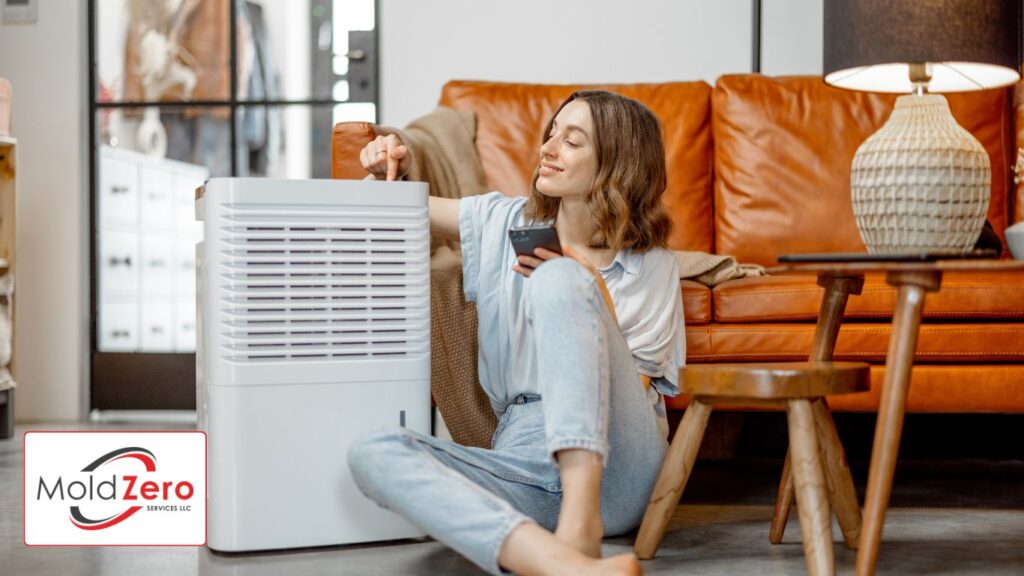15 Moisture Control Tips for LA Homes
Moisture is a common problem in Los Angeles County homes. Excess moisture from water intrusion can lead to mold growth, which can cause health problems and damage your property.
Mold Zero Services is dedicated to helping you maintain a healthy home. We are experts in mold remediation and prevention. We offer a comprehensive five-step process that will remove mold and prevent it from coming back.
But we also want to help you keep your home dry in the first place. That’s why we’ve put together this list of 15 ways to control moisture in your home.
1. Remove Moisture at the Source
The best way to control moisture is to remove it at the source. This means fixing leaks, wiping up spills, and drying wet surfaces immediately.
- Check for leaks: Regularly inspect your plumbing, roof, and appliances for leaks. Even a small leak can release a lot of moisture into your home over time.
- Clean up spills: Wipe up spills and messes as soon as they happen. Don’t let water stand on countertops, floors, or other surfaces.
- Dry wet areas: If an area of your home gets wet, dry it thoroughly as soon as possible. This includes bathrooms, kitchens, and basements.
2. Control Moisture from the Air
Moisture can also enter your home from the air. This is especially common among the coastal cities in Los Angeles, like Long Beach and Santa Monica. where the humidity is often high.
- Use air conditioning: Air conditioning can help to remove moisture from the air. Set your air conditioner to a comfortable temperature and run it regularly.
- Ventilate your home: Open windows and doors to let fresh air circulate. This will help to remove moisture from the air and prevent it from building up.
- Use exhaust fans: Exhaust fans can help to remove moisture from the air in bathrooms and kitchens. Turn on the exhaust fan when you’re showering, cooking, or running the dishwasher.

3. Reduce Moisture from Everyday Activities
Many everyday activities can release moisture into the air. You can reduce this moisture by making a few simple changes.
- Take shorter showers: Shorter showers will release less moisture into the air.
- Cover pots and pans: When cooking, cover pots and pans to reduce the amount of steam that escapes.
- Dry clothes outside: If possible, dry your clothes outside on a clothesline. If you must dry clothes indoors, use a dryer with an exhaust vent that leads outside.
- Use a dehumidifier: A dehumidifier can help to remove moisture from the air, especially in humid climates along the coast of Los Angeles County.
4. Control Indoor Humidity Levels
You can control indoor humidity levels by monitoring them and making adjustments as needed.
- Monitor humidity: Use a hygrometer to measure the humidity in your home. The ideal indoor humidity level is between 30% and 50%.
- Adjust humidity: If the humidity in your home is too high, take steps to reduce it. This may include using a dehumidifier, ventilating your home, or running your air conditioner.
5. Prevent Moisture from Entering Your Home
You can also prevent moisture from entering your home in the first place.
- Seal cracks and gaps: Seal any cracks or gaps in your home’s foundation, walls, and windows. This will help to prevent moisture from entering your home.
- Install a vapor barrier: A vapor barrier is a material that prevents moisture from passing through it. Vapor barriers can be installed in crawl spaces and basements to prevent moisture from entering your home.
- Maintain your gutters: Clean your gutters regularly to ensure that they are draining properly. Clogged gutters can cause water to back up and enter your home.
- Slope the ground away from your home: The ground around your home should slope away from the foundation. This will help to prevent water from pooling around your home and entering your basement or crawl space.
6. Properly Ventilate Your Attic
Your attic can be a major source of moisture problems. Proper ventilation is essential to prevent moisture buildup.
- Ensure adequate ventilation: Make sure your attic has enough vents to allow for proper air circulation. This will help to remove excess moisture and prevent condensation.
- Insulate your attic: Proper insulation can help to prevent condensation and moisture buildup in your attic.
7. Choose Moisture-Resistant Building Materials
When renovating or building a new home, choose moisture-resistant materials.
- Moisture-resistant drywall: Use moisture-resistant drywall in bathrooms and other areas that are prone to moisture.
- Water-resistant flooring: Choose water-resistant flooring materials like tile or vinyl in bathrooms and kitchens.
8. Be Mindful of Landscaping
Your landscaping can also affect the moisture levels in your home.
- Plant trees away from your home: Trees can release a lot of moisture into the air. Plant trees away from your home to prevent them from contributing to moisture problems.
- Use mulch sparingly: Mulch can help to retain moisture in the soil. Use mulch sparingly around your home to prevent excess moisture from seeping into your foundation.
9. Regularly Inspect Your Home
Regular inspections can help you identify and address moisture problems before they become serious.
- Inspect for signs of moisture: Look for signs of moisture, such as water stains, peeling paint, and mold growth.
- Address problems promptly: If you find any signs of moisture, take steps to address the problem immediately.
10. Monitor Your Indoor Plants
Indoor plants can release moisture into the air.
- Choose low-moisture plants: Select plants that don’t require a lot of watering.
- Don’t overwater: Overwatering can lead to excess moisture in the soil and air.

11. Use Doormats
Doormats can help to prevent moisture from being tracked into your home.
- Place doormats at all entrances: Place doormats at all entrances to your home to help absorb moisture from shoes and boots.
12. Maintain Your Appliances
Some appliances, such as refrigerators and dishwashers, can release moisture into the air.
- Check for leaks: Regularly inspect your appliances for leaks and have them repaired promptly.
- Clean your appliances: Keep your appliances clean and free of food debris, which can attract moisture.
13. Avoid Drying Clothes Indoors
Drying clothes indoors can significantly increase moisture levels in your home.
- Dry clothes outside: Whenever possible, dry your clothes outside on a clothesline.
- Use a dryer with an exhaust vent: If you must dry clothes indoors, use a dryer with an exhaust vent that leads outside.
14. Consider a Whole-House Dehumidifier
If you have persistent moisture problems, consider installing a whole-house dehumidifier.
- Whole-house dehumidification: A whole-house dehumidifier can help to control moisture levels throughout your entire home.
15. Consult with a Professional
If you’re concerned about moisture in your home, consult with a professional.
- Professional assessment: A professional can assess your home and identify any potential moisture problems.
- Expert advice: A professional can also provide expert advice on how to control moisture and prevent mold and mildew growth.
Get My Free Mold Inspection
Mold Zero Services is here to help you with all your mold remediation and prevention needs. We are experts in identifying and addressing moisture problems. Contact us today for a free inspection and quote.
Remember: Controlling moisture in your home is essential for preventing mold growth and maintaining a healthy living environment. By following these tips, you can help to keep your home dry and mold-free.
Call Mold Zero Services today at (626) 671-8885 to schedule a free inspection and quote.
We are committed to providing our clients with the highest quality mold remediation services. We use advanced technology and skilled professionals to ensure that your home is properly remediated. We also offer a 1-year guarantee against new mold growth, so you can have peace of mind knowing that your home is protected.

